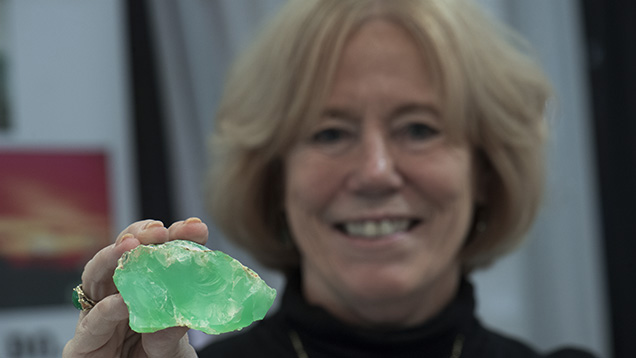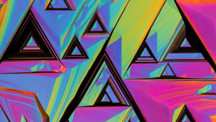Fine Australian Chrysoprase Rough and Carvings – Tucson 2014

Highly translucent, deep-color chrysoprase (figure 1) is recovered from veins two to eight inches in thickness. Osmond said the bright green color of material from this deposit is due to high nickel content, reportedly up to 2.35%.
Osmond explained that most material is found after heavy rain, when the extensively mined terrain shifts. Moving water from intense storms might carry automobile-sized rocks over hills and deposit them in neighboring stream beds kilometers away. The downpours expose everything, even material that the miners have been walking over for years. After every rainstorm, it pays to scour the newly exposed ground and look for glints of green, in case there is a larger vein underneath.
Recovered material is brought back to the mining camp for washing. Water tanks collect the rainfall, and the miners use high-pressure hoses to wash off the rough chrysoprase, which is then handpicked. The best material, marked “premium,” is sent to Sydney for sale, while the remainder is sorted into four grades by color and clarity (A through D). For Tucson, Osmond brought over 80 kg of rough, of which 10 kg was premium quality.

Figure 2. These chrysoprase carvings are from Candala’s Queensland mine. Photo by Eric Welch.
Most buyers gravitated to the top-quality material, all of which was sold, along with over half of the A-grade material. Although buyers bought many carvings (figure 2), to Osmond’s surprise they also purchased large quantities of calibrated goods. Many also sought out top-quality rough for cabochon cutting, rather than gem carvings, indicating a growing awareness and demand for the gem.Candala’s client base includes Indian, German, U.S., and Thai buyers. At this year’s Tucson show, most of the chrysoprase carvings went to collectors, as well as one television shopping channel.



